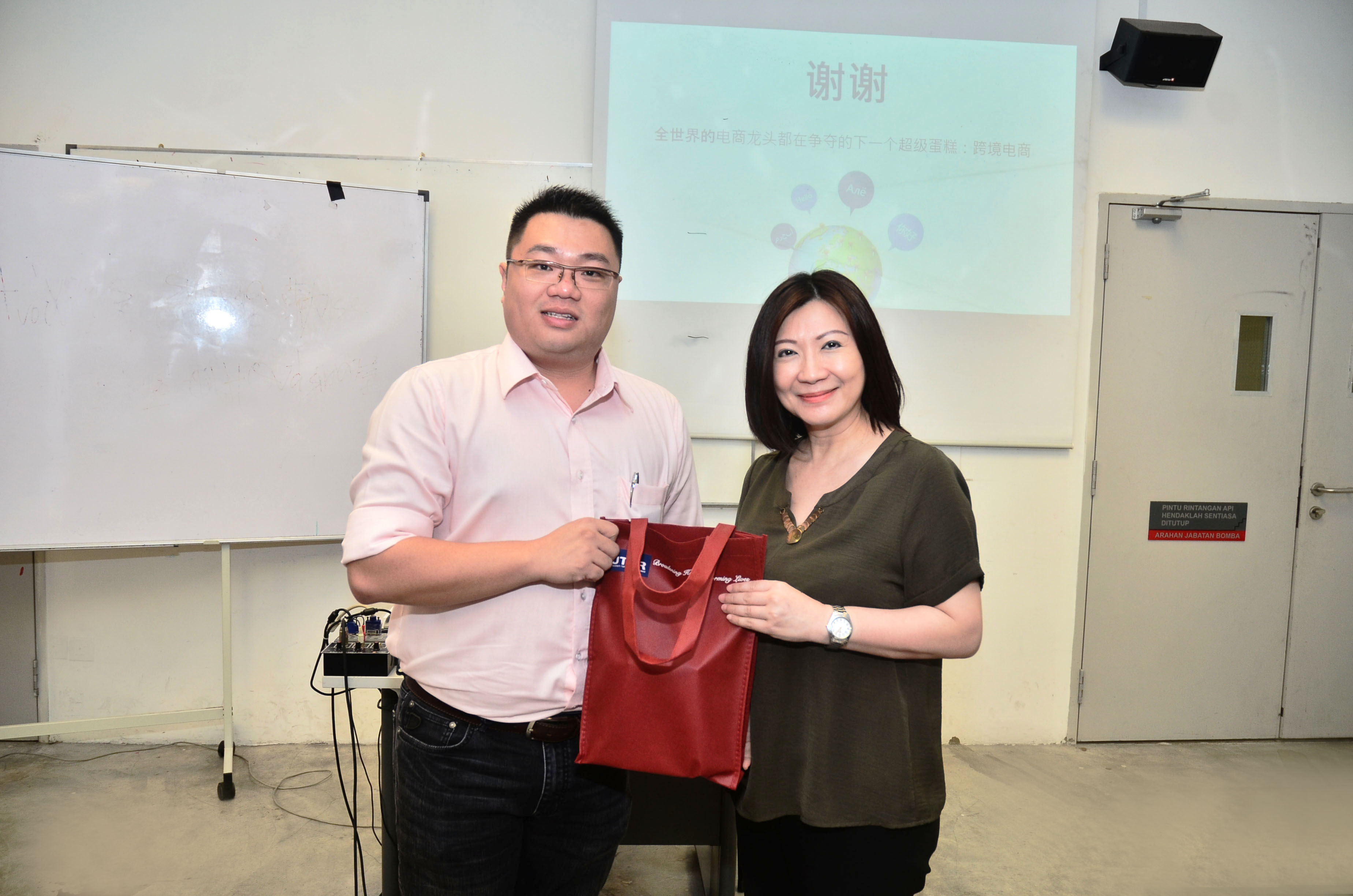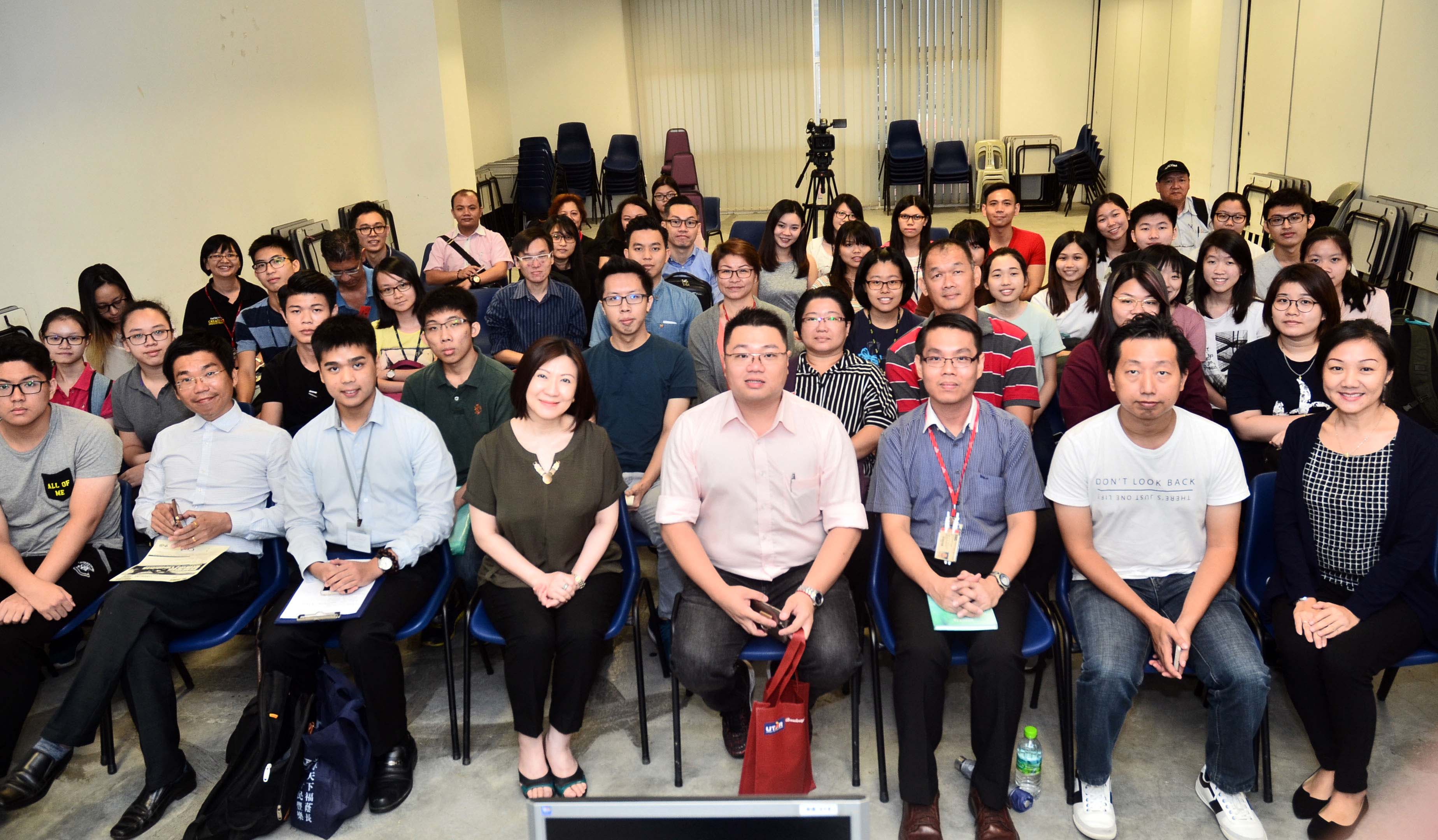
The Centre for Extension Education (CEE) organised a talk titled “China Cross-Border E-Commerce” at Sungai Long Campus on 11 April 2018.
The invited speaker was Eddie Tan. He has 15 years of experience in marketing strategy. He is currently the sole proprietor of two companies, namely Frais Mist Marketing Enterprise in Malaysia and Ocean Starlight Sdn Bhd in Thailand.

Tan during the talk
The objective of the talk was to enable the Small Medium Enterprise (SMEs) to understand how cross-border e-commerce can help Malaysian products to enter China’s market by understanding its cross-border policy, market and its priority to reduce major loss.
At his talk, Tan first explained how products are exported to China. For general export, it will first go through the China Inspection and Quarantine (CIQ), followed by China Customs. It will then be sent to the retailer or e-commerce before reaching the consumers. Cross-border e-commerce, on the other hand, only needs to go through the China Customs and cross-border e-commerce platform before reaching the consumers. He also explained the difference between e-commerce and cross-border e-commerce to the audience.
In order to provide the audience with a better understanding of China’s market, Tan listed out all the percentage of China’s cross-border e-commerce purchased products. The most purchased products on cross-border e-commerce are cosmetic products (52%) and baby products (41%), followed by apparel, shoes, and bags (38%); electronic appliances and digital device (27%); home furniture and healthcare products (22%); and others (12%). Referring to the statistics, Tan explained the reasons behind the mass amount of purchase for cosmetic products and baby products through cross-border e-commerce platforms. He said it was largely due to the recognition of the related products in other countries. For instance, Korea, Japan, and Europe are perceived as countries that produce high-quality cosmetic products due to their reputation in that field and their recognition by the globe.
As such, Tan highlighted the importance of brand recognition and how it is heavily tied to its country. “Therefore, in order to penetrate products into the market, one must first understand what their country is recognised for. For example, Malaysia is highly reputable for latex, which is why other countries prefer to buy latex pillow from Malaysia,” he said.
Last but not least, Tan advised the SMEs of the ways to enter the China market. “The SMEs must first identify who are their target audience and the suitability of the product in China’s market. They should also decide on the business location because China is a huge country and the preference may differ. It is crucial for them to understand the difference between e-commerce, retailing, and cross-border e-commerce as well as how China policies work, import taxes, import permits, and examination reports. Knowing how the product could affect the trend, seasons, and the festival would be an added advantage for the SMEs. Finding a collaboration partner makes it easier for the SMEs to penetrate the China market. Besides understanding the market, SMEs must determine the SWOT analysis for their brand and submit the proposal at least half year before the targeted season comes,” he advised.

CEE Director Lim (right) presenting souvenir to Tan

Fourth from right: Tan with the audience
© 2019 UNIVERSITI TUNKU ABDUL RAHMAN DU012(A).
Wholly owned by UTAR Education Foundation Co. No. 578227-M LEGAL STATEMENT TERM OF USAGE PRIVACY NOTICE